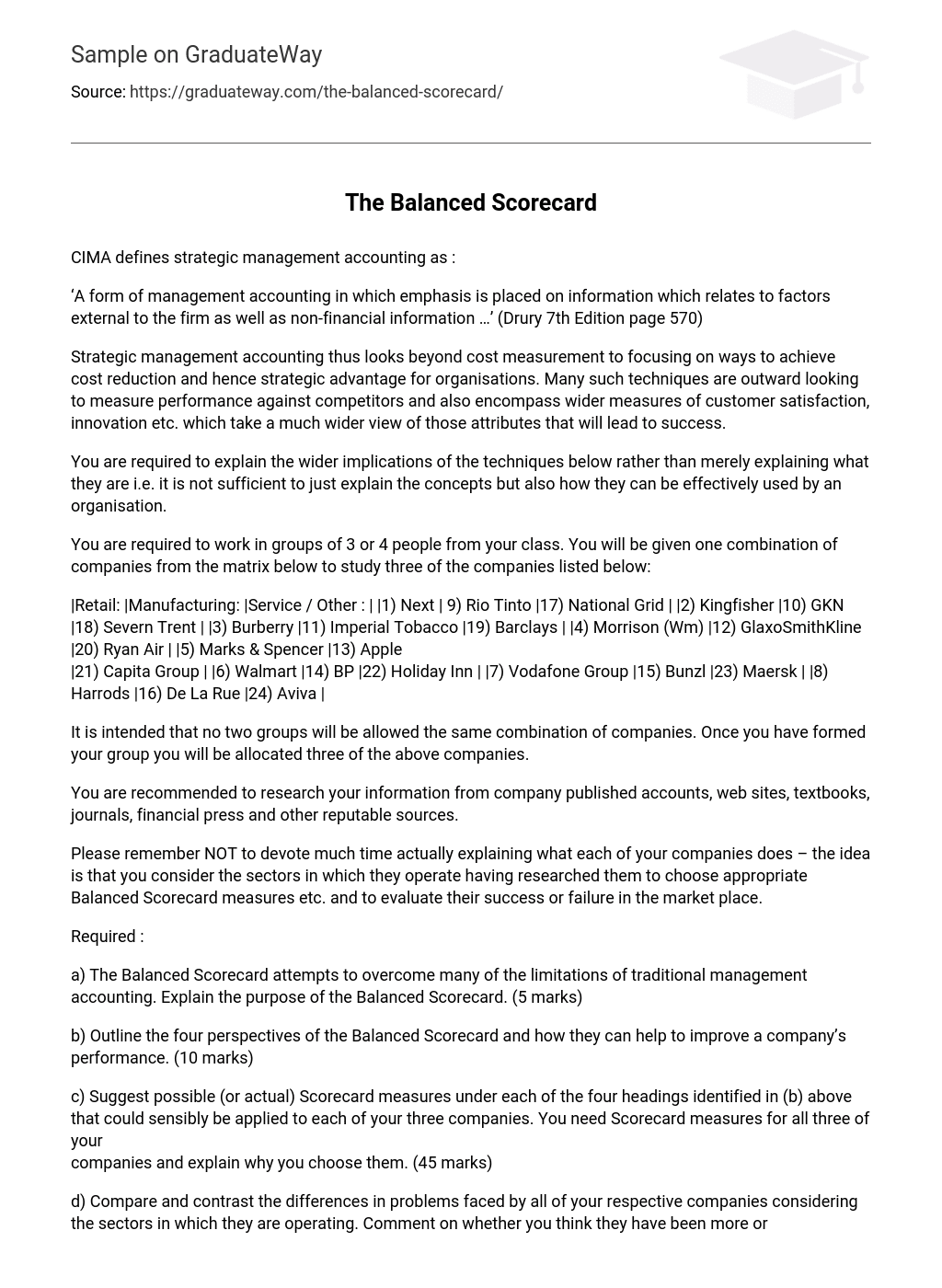CIMA’s definition of strategic management accounting is:
According to Drury’s 7th Edition (page 570), strategic management accounting is a type of management accounting that focuses on external factors and non-financial information.
Strategic management accounting aims to go beyond simply measuring costs and instead focuses on finding ways to reduce costs, ultimately giving organizations a strategic advantage. Numerous techniques used in this field involve comparing performance against competitors and considering broader indicators such as customer satisfaction and innovation. These techniques offer a broader perspective on the attributes necessary for achieving success.
When discussing the techniques below, it is crucial to both explain their concepts and explore their effective implementation by an organization, considering their broader implications.
Students are required to form groups of three or four classmates. Each group will be assigned a specific combination of companies from the provided matrix, and they must study three of the listed companies below:
|Retail: |Manufacturing: |Service / Other : | |1) Next | 9) Rio Tinto |17) National Grid | |2) Kingfisher |10) GKN |18) Severn Trent | |3) Burberry |11) Imperial Tobacco |19) Barclays | |4) Morrison (Wm) |12) GlaxoSmithKline |20) Ryan Air | |5) Marks & Spencer |13) Apple
|21) Capita Group | |6) Walmart |14) BP |22) Holiday Inn | |7) Vodafone Group |15) Bunzl |23) Maersk | |8) Harrods |16) De La Rue |24) Aviva |
Every group will have a unique combination of companies assigned to them. After forming your group, you will be given three companies from the options provided above.
It is advisable to gather information for your research from various reliable sources such as company published accounts, web sites, textbooks, journals, financial press, and other reputable sources.
Please remember to focus on the sectors in which your companies operate when choosing appropriate Balanced Scorecard measures and evaluating their success or failure in the market place. Avoid spending too much time explaining what each company does. Conduct thorough research beforehand.
Required:
The purpose of the Balanced Scorecard is to overcome the limitations of traditional management accounting. It attempts to do this through various means. (5 marks)
b) Describe the four perspectives of the Balanced Scorecard and their potential to enhance a company’s performance. (10 marks)
c) Please provide possible or actual Scorecard measures for each of the four categories identified in (b) above that could be applied to all three of your companies. You should include Scorecard measures for each of your three companies and provide an explanation for your choices. (45 marks)
This paragraph seeks to compare and contrast the problems faced by different companies in different sectors. It also asks for an opinion on the level of success achieved compared to their main competitors, with a maximum score of 30 marks.
e) The marks for presentation and layout, disc, overall quality, originality, references, and bibliography are worth a total of 10 marks.
There are a total of 100 marks.
According to University regulations, late submissions will not be granted an extension beyond the above deadline.
It is important that you hand in your work to Room B809 by Friday 22nd March 2013 before 5:00pm. If you are late, a deduction of 5% of your total marks will be made for each day of delay.
If plagiarism is detected, your work will be sent to the Academic Registry. This could result in a grade of zero or require you to repeat the module.





